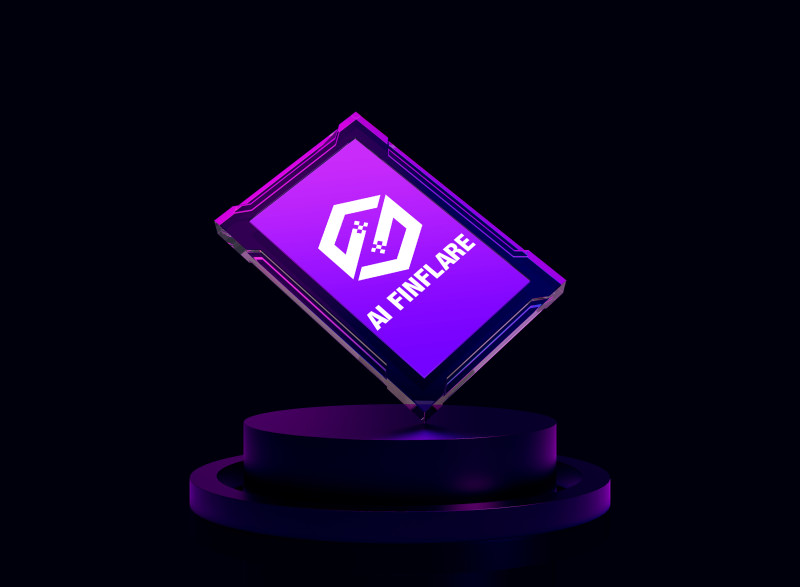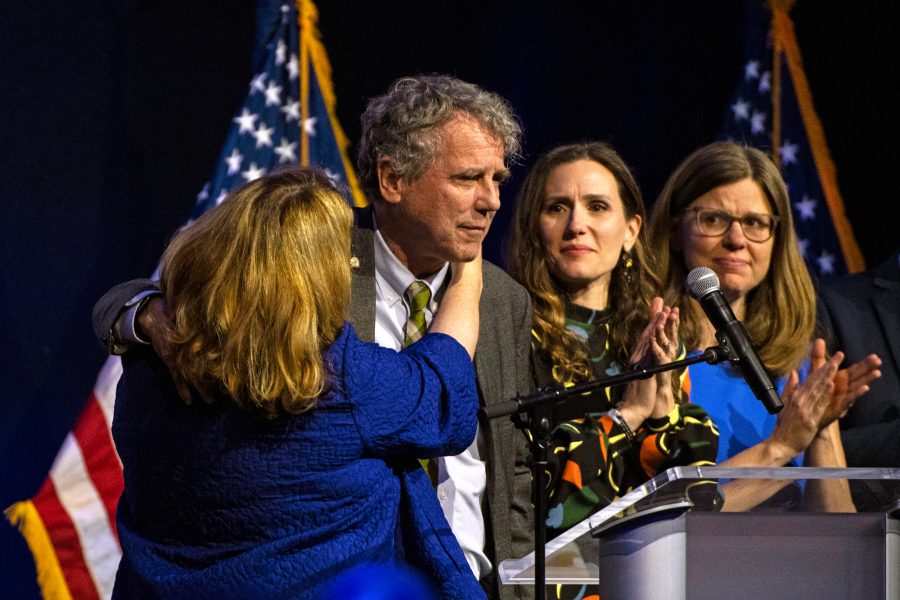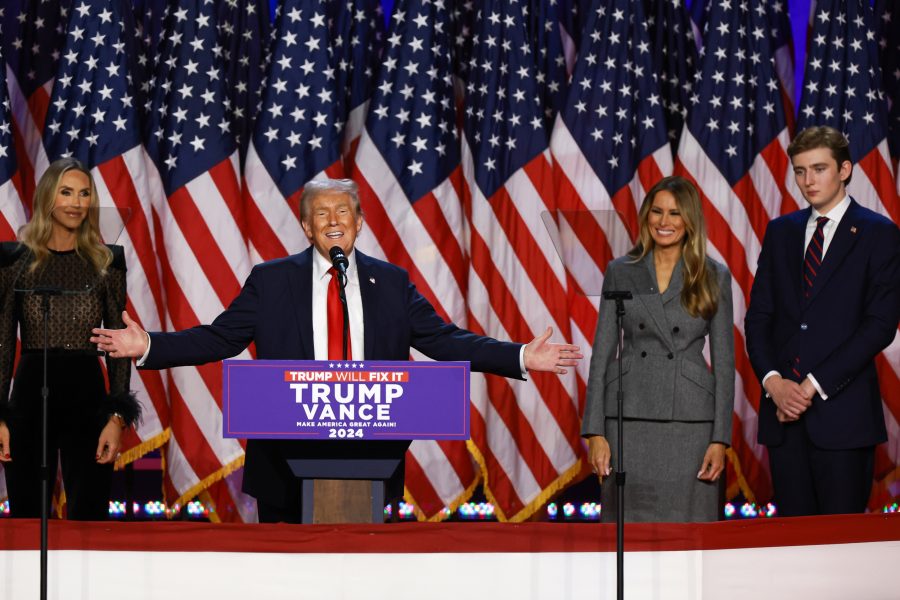Vehicle Carbon Pollution Would Be Cut, But More Slowly, Under New Biden Rule
Foreseeing a slower U.S. switch to fully electric vehicles than envisioned a year ago, President Joe Biden’s administration on Wednesday finalized tailpipe pollution standards that it says would cut carbon emissions from new passenger vehicles by more than half by 2032.
The updated regulations are still projected to cut carbon pollution by 7.2 billion tons through 2055—only 1 percent less than the Environmental Protection Agency’s original proposal—making it Biden’s single most consequential executive action on climate change.
But the EPA anticipates that goal will be achieved with more heavy reliance in the near term on hybrid and plug-in hybrid vehicles, which have gasoline engines to back up their electric drive.
Administration officials stressed that the slower ramp-up, which came in response to input from automakers, organized labor leaders and car dealers, will offer greater flexibility for consumers while still achieving Biden’s environmental goals.
We’re hiring!
Please take a look at the new openings in our newsroom.
See jobs“These strongest-ever pollution standards for cars solidify America’s leadership in building a clean transportation future and creating good-paying American jobs,” said EPA Administrator Michael Regan in a prepared statement. In addition to the cuts in carbon, he said the rules will “improve air quality in overburdened communities, and give drivers more clean vehicle choices while saving them money.”
Most automakers already are electrifying their fleets, some to greater extents than others, and pure battery-electric vehicles accounted for 7.4 percent of new passenger vehicle sales in 2023, up from 5.4 percent in 2022, according to tracking by the Department of Energy’s Argonne National Laboratory.
Instead of ramping up the pace to achieve a 67 percent EV passenger fleet by 2032, as the agency originally estimated in May 2023, the new regulations will result in 30 percent to 56 percent market penetration for purely battery-driven cars, SUVs and light trucks, the EPA projects. For medium-duty vehicles such as delivery vans and commercial trucks, the EPA anticipates EVs will comprise 20 percent to 32 percent of the market by 2032 under the new rules.
The regulations, designed to be “technology-neutral,” do not mandate that automakers increase EV sales. Instead, they require them to cut greenhouse gas pollution from an estimated fleet average of 186 grams per mile in model year 2026 to 85 grams per mile by model year 2032, a reduction of 54 percent. That’s slightly less stringent than the original EPA proposal unveiled last year, which sought a 56 percent cut, to 82 grams per mile, by 2032. The rules also would impose the cuts more gradually, and include a variety of credits and other options for automakers that the EPA anticipates will mean a bigger role for plug-in hybrid electric vehicles.
Toyota, which introduced the hybrid gas-electric vehicles to the market with its Prius in 1997, has lagged in all-electric drive but now offers hybrid versions of most models. Plug-in hybrids like the Ford Escape SUV, which travel solely on electric power for a certain number of miles before switching to gas, have proven popular and manufacturers are adding them to their lineups.
Several automakers, including Ford and GM, have said in recent months that hybrids will be an important part of their lineups going forward, an emphasis that responds to requests from dealers and signs of rising demand for the models.
“Moderating the pace of EV adoption … was the right call because it prioritizes more reasonable electrification targets in the next few (very critical) years of the EV transition,” said John Bozzella, president and CEO of the Alliance for Automotive Innovation, which represents the vast majority of manufacturers selling in the U.S. market. “These adjusted EV targets—still a stretch goal—should give the market and supply chains a chance to catch up. It buys some time for more public charging to come online, and the industrial incentives and policies of the Inflation Reduction Act to do their thing,” he said, referring to the 2022 law that allocated billions of dollars in federal funds to support the clean energy transition.
The United Auto Workers said the EPA had made “significant progress” in addressing its concerns. “By taking seriously the concerns of workers and communities, the EPA has created a more feasible emissions rule that protects workers building [internal combustion engine] vehicles, while providing a path forward for automakers to implement the full range of automotive technologies to reduce emissions,” the UAW said in a prepared statement. The union said it was calling on the Biden administration to hold the automakers accountable so that the rule is not used as an excuse to cut or offshore jobs. “We reject the fear mongering that says tackling the climate crisis must come at the cost of union jobs,” the UAW said. “Ambitious and achievable regulations can support both.”
Major environmental and health advocacy groups voiced support for the Biden team’s approach for tackling the nation’s biggest climate problem—transportation emissions—which currently account for 29 percent of U.S. greenhouse gas emissions. So-called “light duty,” or passenger vehicles, account for 58 percent of those transport emissions.
“We of course want to push for as many electric vehicles as possible because of their zero tailpipe emissions profile,” said Matthew Davis, vice president of federal policy for the League of Conservation Voters. “But that said, there are a variety of ways for folks to meet the climate and other tailpipe pollution standards that the EPA is setting.”
Speaking prior to release of the rules, Davis said his group would be looking at the underlying emissions requirements, not just the modeling of how many electric vehicles will be sold. “As long as it’s within the range of what was laid out in their proposal, this is going to be a historic, yet reasonable transition to zero-emissions vehicles and tackling the climate crisis,” he said.
The American Lung Association (ALA), which recently released a report calculating major health benefits from a transition to zero-emissions transportation and electricity, called the rules “a critical step.”
“We are especially pleased to see the final rule includes strong standards to reduce particulate matter from new gasoline vehicles,” said ALA President and CEO Harold Wimmer. “The strict standards will require state-of-the-art pollution controls that are widely used in Europe and Asia and will save lives.”
Particulate matter, the fine pollution from combustion that can harm lungs and the cardiac system, would be cut by more than 95 percent under the new rule, the EPA projects. The agency anticipates that to meet the target, U.S. automakers will begin employing particulate filters on gasoline-fueled cars, a technology already used on a vast majority of vehicles in Europe and Asia.
But long-time clean car activist Dan Becker, director of the Safe Climate Program at the Center for Biological Diversity, accused the EPA of caving in to industry pressure. The agency “riddled the plan with loopholes big enough to drive a Ford F-150 through,” he said in a prepared statement. For example, automakers can get carbon reduction credits for various efficiency technologies like engine idling or aerodynamic design, even if the improved performance doesn’t show up in standard laboratory testing. Critics have asked the EPA to reform or end such practices, which they say have allowed automakers to amass credits without reducing carbon emissions. “The weaker rule means cars and pickups spew more pollution, oil companies keep socking consumers at the pump, and automakers keep wielding well-practiced delay tactics,” Becker said
At least one stakeholder does not think the changes that EPA made in its proposal will weaken it at all: the oil industry. “At a time when millions of Americans are struggling with high costs and inflation, the Biden administration has finalized a regulation that will unequivocally eliminate most new gas cars and traditional hybrids from the U.S. market in less than a decade,” said a joint prepared statement by American Petroleum Institute President Mike Sommers and American Fuel & Petrochemical Manufacturers President Chet Thompson. “As much as the President and EPA claim to have ‘eased’ their approach, nothing could be further from the truth.” They called on Congress to overturn the regulation; failing that, they said their organizations would challenge it in court.
A senior administration official said that over the past year, regulators heard “persuasive information” from manufacturers, dealers and labor, “suggesting that the rule would be more durable if we provided … the market a little bit more lead time.”
Durability is a key issue for the administration, since the rules are likely to be quickly challenged in federal courts, where the Biden administration faces a judiciary that has turned sharply skeptical of federal regulatory authority, due in part to the conservative Supreme Court majority installed under former President Donald Trump.
The pleas to ease the stricter regulations came from both the auto industry and the United Auto Workers in an election year when winning Michigan is seen as essential to Biden’s re-election chances; he trails Trump in most recent polls. Trump has made anti-EV rants a standard part of his stump speeches, and over the weekend, to clarify his prediction of “a bloodbath” if he is not re-elected, he posted on the social media platform Truth Social that he was referring to the election’s impact on the auto industry.
But Biden is going into the election with the endorsement of the United Auto Workers, after becoming the first sitting president to walk a picket line when he supported the union’s strike against automakers last fall. UAW President Shawn Fain appeared as Biden’s guest at his State of the Union address earlier this month.
In a briefing with reporters Tuesday, senior administration officials repeatedly stressed their engagement with labor on the vehicle emissions rules. In its comments to the EPA last year, the UAW voiced concern that the EV transition could lead to “an erosion of job quality” in the auto industry, with jobs shifting to lower-paid, non-union plants. One administration official said the Biden team has confidence workers ultimately will benefit from the new vehicle regulations because of the way they will work together with other initiatives, such as the Inflation Reduction Act of 2022, which provides billions of dollars of incentives for companies that manufacture in the United States and pay prevailing wages.
“All of these are aligned and working together to unlock value for the American people, strengthen our competitive position, lift up our workers and tackle the climate crisis,” the official said.
Share this article
Disclaimer: The copyright of this article belongs to the original author. Reposting this article is solely for the purpose of information dissemination and does not constitute any investment advice. If there is any infringement, please contact us immediately. We will make corrections or deletions as necessary. Thank you.







